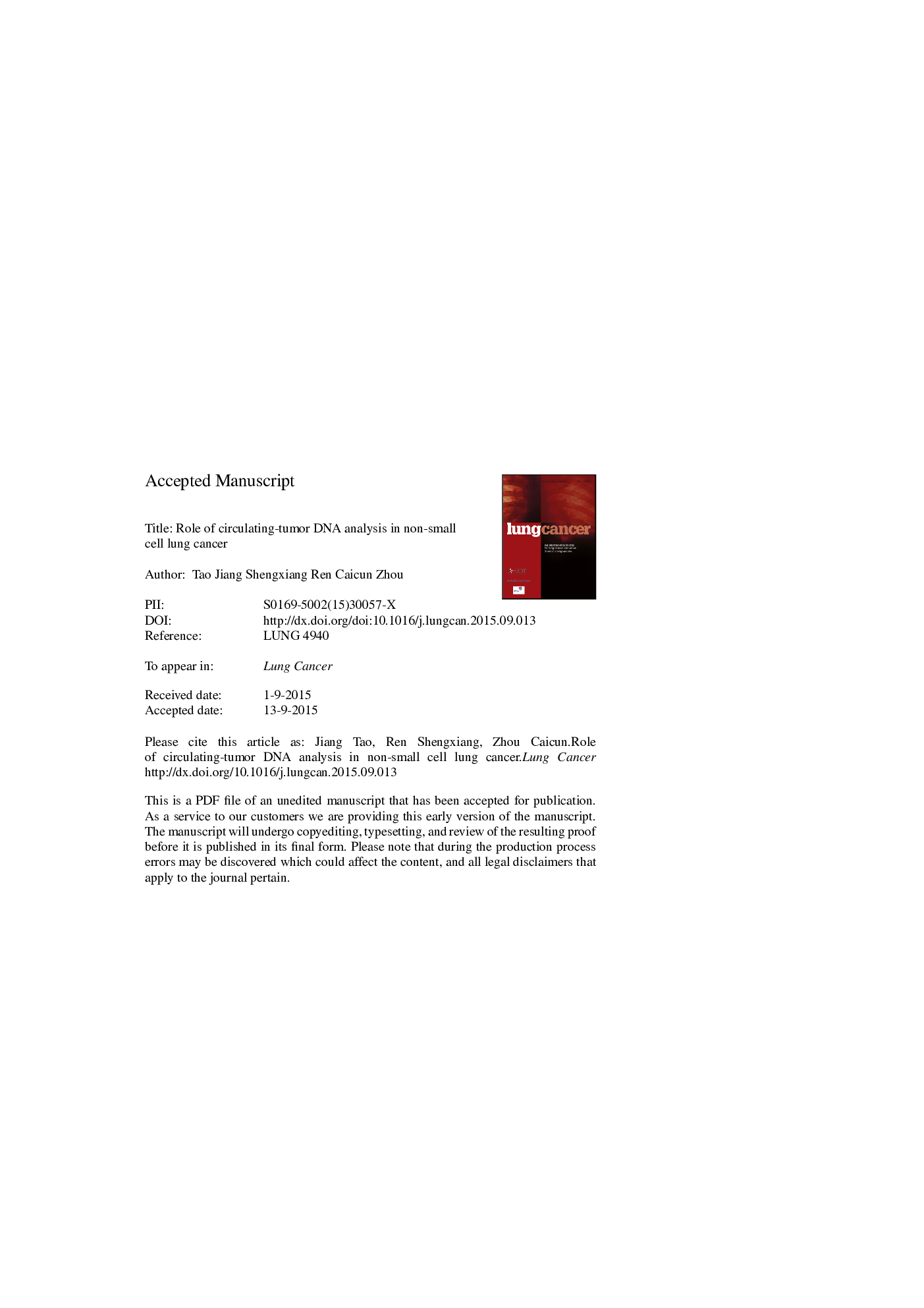| Article ID | Journal | Published Year | Pages | File Type |
|---|---|---|---|---|
| 10910798 | Lung Cancer | 2015 | 40 Pages |
Abstract
The discovery of actionable driver mutations such as epidermal growth factor receptor (EGFR) and microtubule-associated protein-like 4 anaplastic lymphoma kinase (EML4-ALK) and their highly responses to EGFR and ALK tyrosine kinase inhibitors (TKIs) in patients with advanced non-small-cell lung cancer (NSCLC) allowed precise medicine into reality. However, a substantial part of patients still have no sufficient tissue to perform genomic analysis. As a promising noninvasive biomarker and potential surrogate for the entire tumor genome, circulating tumor DNA (ctDNA) has been applied to the detection of driver gene mutations and epigenetic alteration and monitoring of tumor burden, acquired resistance, tumor heterogeneity and early diagnosis. Since precise therapy is a strategy that optimal therapy is decided based on simultaneous tumor genome information, ctDNA, as a liquid biopsy, may help to perform dynamic genetic surveillance. In this paper we will perspectively discuss the biology and identification of ctDNA in the blood of NSCLC patients and its clinical applications in patient management.
Related Topics
Life Sciences
Biochemistry, Genetics and Molecular Biology
Cancer Research
Authors
Tao Jiang, Shengxiang Ren, Caicun Zhou,
